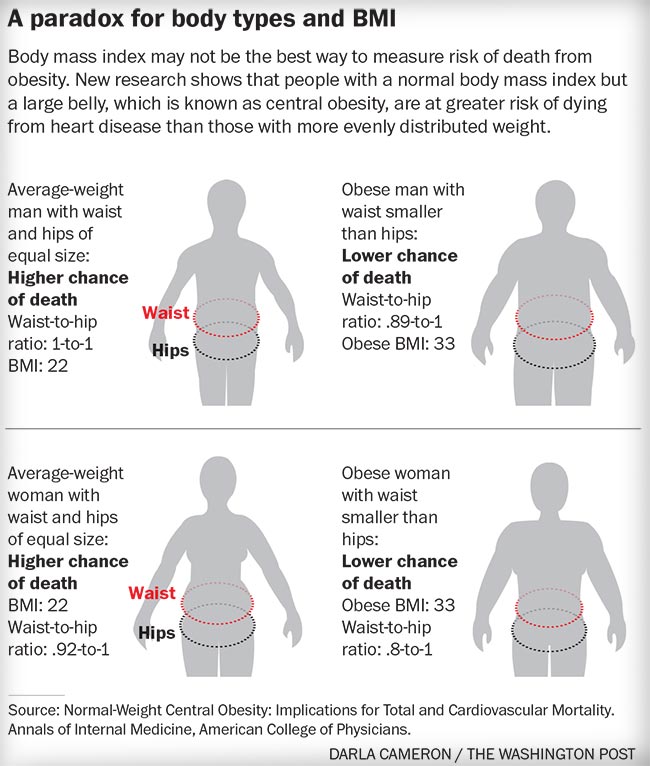
Everybody knows that having a a bit of belly - or more - could be bad for your health, but is that always true? According to new research, one way to answer that question is pretty simply: measure the broadest part of your waist and hips with a piece of string.
"If it takes more string to measure waist than hips that's bad, and it relates to a higher rate of death," said Francisco Lopez-Jimenez, a Mayo Clinic researcher and lead author on a study exploring the relationship between body mass index and weight distribution.
The study found that people with a normal body mass index but an apple-shaped torso (sometimes known as a dad bod) are at greater risk of dying from heart disease than an obese person with more evenly distributed weight.
For both men and women, the hips should have a longer circumference around the largest part of the buttocks, compared to the abdomen. A healthy ratio of belly-to-hips in women is .85-to-1, and for men the ideal ratio is .9-to-1. Lopez-Jimenez said any ratio greater than 1-to-1 is cause for concern.
It's well-known that BMI, based on a formula that takes into account height and weight but not muscle mass or overall level of fitness, has its limitations. But this new way of thinking - and measuring - health is another useful metric for people to use in determining whether a little extra girth is really that bad. Or whether you're actually a normal weight for your height, but have the kind of extra abdominal fat that poses higher health risks.
The following diagram shows a few of the different kinds of body shapes and what they mean for your health. The first kind - an average of a normal weight but with a bit of belly - is one of the deceptively perilous body shapes. Meanwhile, men with a high BMI but a low waist-to-hip ratio are often doing just fine. Think athletes.

A woman with a low BMI but a large stomach relative to her hips is at a higher risk for health problems, while a woman with a high BMI but relatively small waist may be fine.
"The measurement is so simple that I personally believe people should feel empowered to measure themselves, like they weigh themselves," Lopez-Jimenez said. "You can't get simpler than that."
If your measurements are out of sync, don't despair: Lopez-Jimenez said a diet low in refined carbohydrates may help. Strength training and aerobic exercise are also key: "The very first fat that we burn after engaging in a good exercise program is actually abdominal fat."
He also cautions that people with abdominal obesity shouldn't try to increase their BMI on purpose. Some athletes have a high BMI - anything above 30 is generally a sign of obesity - but a healthy hip-to-waist ratio, because muscle weighs more than fat.
Track Latest News Live on NDTV.com and get news updates from India and around the world

